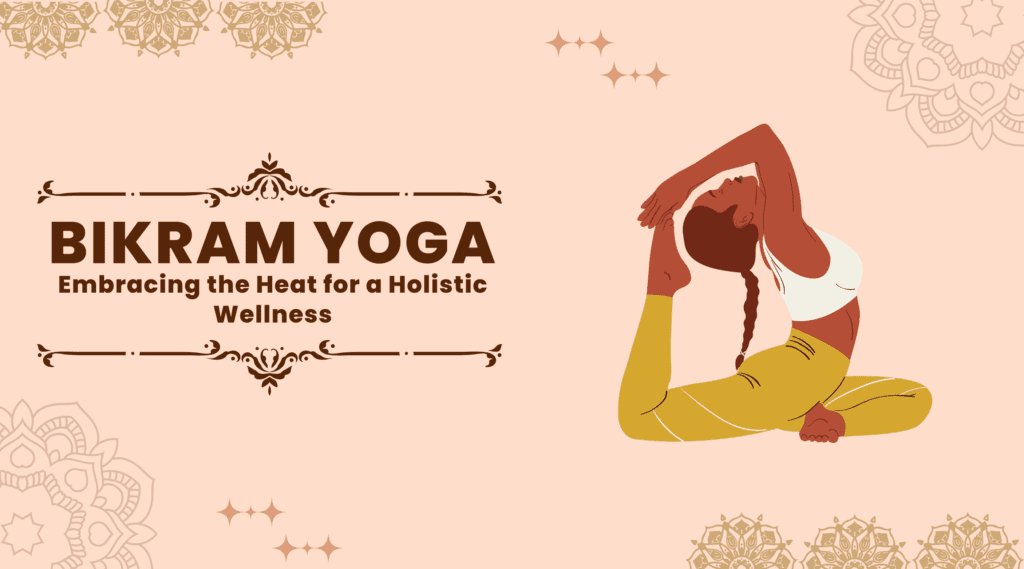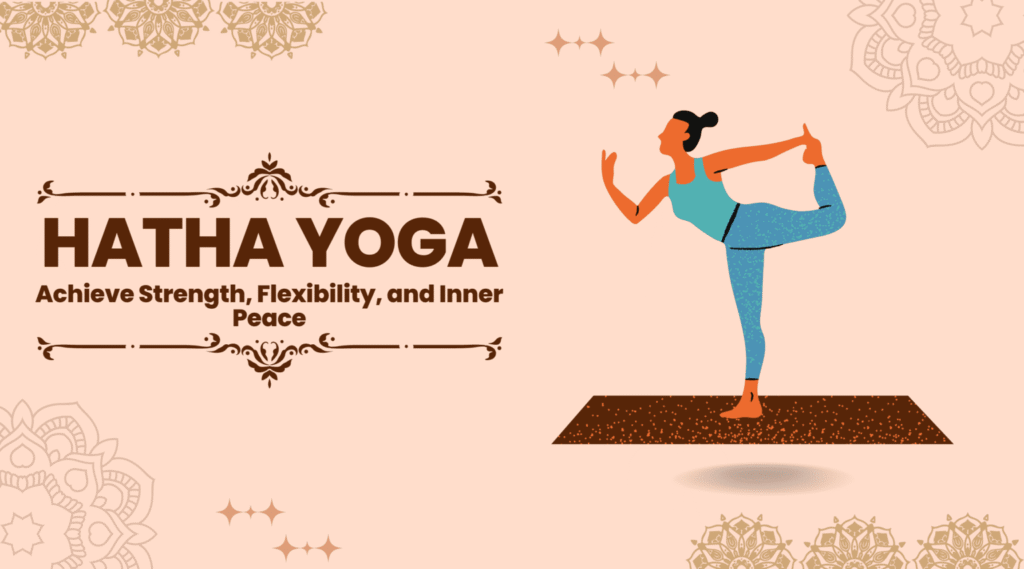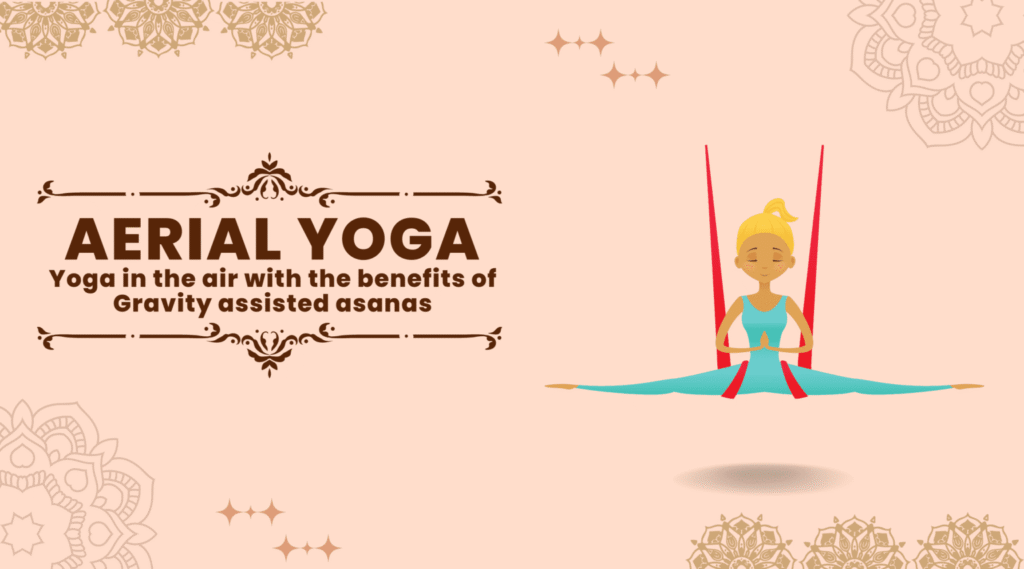Bikram Yoga: Discovering the Essence of Hot Yoga

Introduction
Bikram Yoga is a type of hot yoga style which is performed under the conditions of hot temperature. This style of hot yoga consists of 26 postures and two breathing exercises.
Practitioners perform the postures in a heated room that has a typical temperature of 105 degrees Fahrenheit with a humidity of 40%.
It is based on the principles of Hatha Yoga. It involves physical postures (asanas), breathing exercises (pranayama), and meditation.
The practice of Bikram Yoga is designed to increase flexibility, strength, balance, and focus. The heat enhances the benefits of the postures by increasing circulation, promoting detoxification. It reduces the risk of injury as well.
Suggested: Best Yoga Retreats And Yoga Teacher Training In Rishikesh
History of Bikram Yoga
Yoga guru Bikram Choudhury developed this form of yoga called Bikram Yoga in the early 1970s. Choudhury was born in Calcutta, India in 1946.
Bikram Choudhury began practising yoga at a young age. He got training in the tradition of Hatha Yoga from his guru, Bishnu Charan Ghosh. Guru, Bishnu Charan Ghosh was also the founder of the Ghosh Yoga College in Calcutta.
In the 1960s, Choudhury began teaching yoga in India and quickly gained a following. In 1971, he moved to the United States and opened his first yoga studio in Los Angeles.
He began teaching his unique style of hot yoga in a small studio in the basement of a building. And he called this hot yoga Bikram Yoga.
The practice of Bikram Yoga became popular in Los Angeles. Choudhury soon opened additional studios throughout the United States and around the world. The practice gained a reputation for its intense heat and physically challenging postures.
In the 1990s, Choudhury began training teachers to teach his hot yoga. He established a certification process for instructors also. He also founded the Bikram Yoga College of India. This college serves as the headquarters for the practice.
Controversy with Bikram Yoga
However, in recent years, Bikram Choudhury has been the subject of controversy. He got allegations of sexual harassment and assault. Many studios and instructors have distanced themselves from Choudhury and have rebranded their studios with different names.
Despite the controversy surrounding Choudhury, the practice of Bikram Yoga continues to be popular around the world. Many studios have adapted the practice. They made it more accessible, offering classes at lower temperatures or with modifications for beginners.
In 2021, the United States Patent and Trademark Office invalidated the trademark for “Bikram Yoga,” ruling that the term had become too generic to be protected. As a result, the practice may now be called by other names, such as hot yoga or heated yoga.
Benefits of Bikram Yoga
This Hot Yoga offers potential benefits that include:
- Improved Flexibility: The intense heat of in this form of yoga can help to loosen tight muscles and increase flexibility. The 26 postures practised in here are designed to stretch and strengthen the entire body.
- Increased Strength: The postures in Bikram Yoga work on all of the major muscle groups. It helps to increase overall strength and muscle tone.
- Improvement Coordination and Balance: Using standing postures while performing this hot yoga improves and develop a proper balance & coordination. It helps to improve these skills over time.
- Reduced Stress and Anxiety: The focus on breathing and relaxation helps to reducing stress and anxiety. The practice can also help to improve sleep quality and reduce symptoms of depression.
- Detoxification: The heat and humidity of Bikram Yoga promotes sweating and detoxification. This helps to eliminate toxins from the body.
- Improved Cardiovascular Health: The intense physical exertion of Bikram Yoga can help to improve cardiovascular health and reduce the risk of heart disease.
- Weight Loss: Bikram Yoga can be a calorie-burning workout, which can help to promote weight loss and improve overall body composition.
- Increased Focus and Mental Clarity: The focus required to maintain proper form and alignment in Bikram Yoga can help to improve mental clarity and focus.
Techniques of Bikram Yoga
- The Practitioners perform the 26 postures in a specific sequence. They hold each posture for a set amount of time.
- The first posture is Standing Deep Breathing. It is a breathing exercise. Practitioners need to perform it at the beginning of each class.
- The remaining postures are divided into two sets, with each set consisting of 12 postures.
- The first set of postures includes standing poses, such as the Half Moon Pose, Eagle Pose, and Standing Bow Pose. These poses strengthen the legs, improve balance, and stretch the spine.
- The second set of postures includes floor poses, such as the Cobra Pose, Bow Pose, and Rabbit Pose. These poses strengthen the back, open the chest, and stretch the hips and thighs.
- Throughout the class, the teacher guides students through the postures, providing verbal cues and adjustments to ensure proper alignment and form. Students must focus on their breath and to push themselves to their limits while maintaining a sense of calm and relaxation.
- This hot yoga is a way to improve physical fitness and reduce stress. Proponents of the practice claim that it helps with weight loss, improve cardiovascular health, increase flexibility, and reduce chronic pain. However, some experts caution that the extreme heat and intensity of the practice can increase the risk of injury. It can be injurious especially for those with certain medical conditions or physical limitations.
Features of Bikram Yoga
The unique features includes:
- Heat: It is performed in a room that is typically heated to 105 degrees Fahrenheit with a humidity of 40%. The heat enhances the benefits of the practice by increasing circulation, promoting detoxification, and reducing the risk of injury.
- Sequence: It consists of 26 postures and two breathing exercises in a specific sequence. The postures are designed to work the entire body, and each posture is held for a set amount of time.
- Duration: A typical Bikram Yoga class lasts 90 minutes, which includes a warm-up, the 26 postures, and a final relaxation period.
- Verbal Cues: During a class, the teacher provides verbal cues and adjustments to ensure proper alignment and form. Students should focus on their breath and to push themselves to their limits while maintaining a sense of calm and relaxation.
- Focus on Breathing: Emphasises the importance of breath control and awareness. Students must breathe deeply and evenly throughout the practice. This will promote relaxation and reduce stress.
Cautions while practising Bikram Yoga
While this form of hot Yoga can offer many potential benefits, there are also some cautions to keep in mind when practising this form of yoga. Some of these include:
- Dehydration: The high heat and humidity in a Bikram Yoga class can lead to dehydration. It is important to drink plenty of water before, during, and after class to stay hydrated.
- Heat Exhaustion: The intense heat in a Bikram Yoga class can lead to heat exhaustion. Hence one must to take proper precautions while performing Bikram Yoga session.
- Overexertion: It is important to practise this yoga form with proper form and alignment to avoid overexertion and injury. If you feel any pain or discomfort, it is important to modify or come out of the posture.
- Medical Conditions: This type of Yoga may not be appropriate for individuals with certain medical conditions, such as heart disease, high blood pressure, or pregnancy. It is important to consult with a healthcare professional before starting a new exercise routine.
- Hygiene: Because practitioners practise in a hot and humid environment. So it is important to practise good hygiene to avoid the spread of germs. It is always good to bring a towel to lay on your mat and to wash your yoga clothes after each class.
- Instructors: It is important to choose an instructor who is certified and has good experience of teaching Bikram Yoga.
Expectations from a Bikram Yoga class
When attending a Bikram Yoga class, you can expect a physically and mentally challenging workout in a hot and humid environment. A set sequence of 26 yoga postures, verbal Instructions, limited music or distractions etc.
Conclusion
Bikram Yoga is a physically and mentally challenging form of yoga and includes a hot and humid environment. Despite its challenges, this yoga form can be a rewarding and transformative form of exercise for those willing to embrace its unique style and environment.
Despite the controversy surrounding Bikram Choudhury and his personal conduct, the practice of Bikram Yoga continues to be popular around the world.
Many studios have adapted the practice to make it more accessible, offering classes at lower temperatures or with modifications for beginners.
As with any form of exercise, it is important to consult a doctor before beginning a new practice, especially if you have any underlying health concerns.
You Can Also Read


